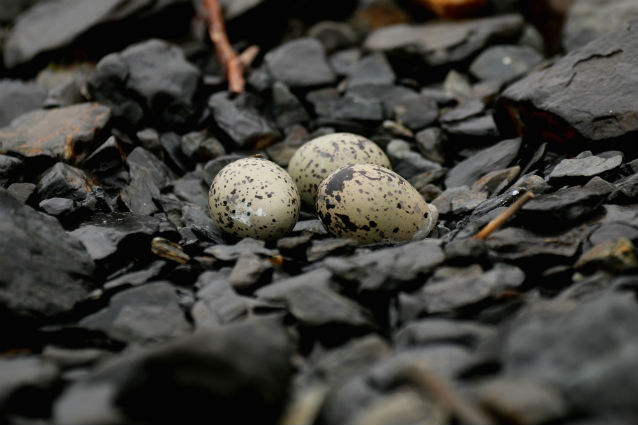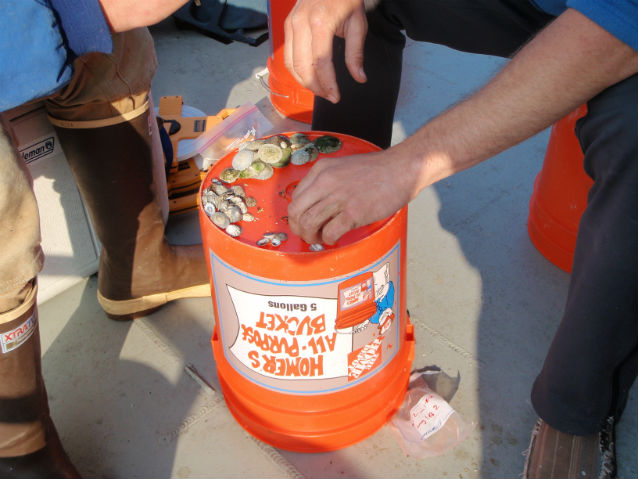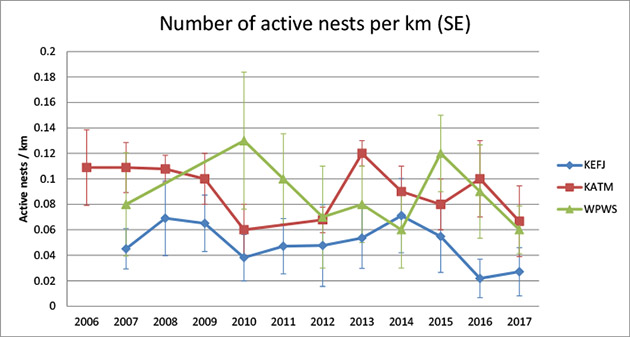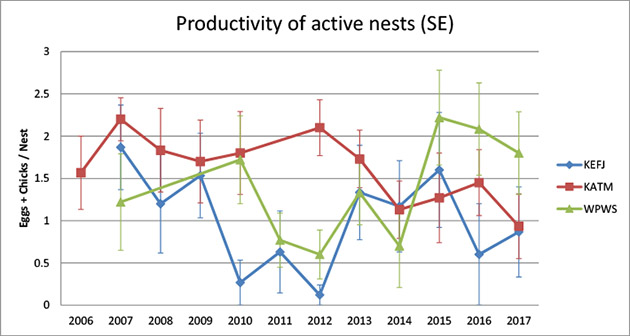Importance

NPS/K. Chritz
The black oystercatcher is a common and conspicuous member of rocky intertidal marine communities and is thought to be important in structuring nearshore ecosystems. Black oystercatchers are completely dependent on nearshore marine habitats for all critical parts of their life cycle including foraging, breeding, chick-rearing and resting. Because of their complete reliance on nearshore marine habitats, they are also highly susceptible to human disturbance. The black oystercatcher is considered a Management Indicator Species by the Chugach National Forest and a species of concern by the Alaska Shorebird Working Group. It is widely recognized as a species representative of nearshore habitats and therefore particularly amenable to long-term monitoring.

NPS/K. Chritz
Monitoring Approach

NPS
Southwest Alaska Network (SWAN) staff and partners have been monitoring black oystercatchers annually in Katmai National Park and Preserve (NPP) since 2006, annually in Kenai Fjords National Park (NP) since 2007 and in western Prince William Sound (WPWS) since 2007, with annual sampling in WPWS starting in 2010. Boat-based surveys are conducted in early summer to determine breeding density. Nests are located on foot and examined for presence of chicks and/or eggs to determine productivity. Prey remains are collected and identified to species to determine chick provisioning habits.
Active Nest Density

Black oystercatcher transects were analyzed at the regional level for nest density (nest/km) and productivity (chicks + eggs/nest) by year in Katmai National Park and Preserve, Kenai Fjords National Park, and western Prince William Sound. Although highly variable in all three regions, active nest density continues to be similar across time with little evidence of a trend (Figure 1).
Nest Productivity

Nest productivity (the number of eggs and chicks per nest) also tends to be highly variable across all regions (Figure 2). Because we only visit a nest once a year in our monitoring program, results reflect productivity at the time of the survey, adding to the variability in the results.
Chick Diet

Prey remains collected from nests indicate that limpets (predominantly Lottia sp.) and mussels (Mytilus trossulus) continue to be the dominant food source for black oystercatchers in all three regions. We observed a decrease in the proportion of mussels in black oystercatcher diet over time, concurrent with changes in mussel availability. Changes in prey abundance and how those changes potentially affect black oystercatcher populations is a question our long-term monitoring data are designed to answer.
For More Information
Contact: Heather Coletti, heather_coletti@nps.gov
https://science.nature.nps.gov/im/units/swan/monitor/nearshore.cfm
Updated March 2018

Last updated: March 19, 2018






